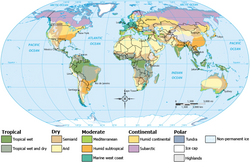The Appropriate hygiene manual (AHM) describes the products and herbs that are used for personal hygiene purposes. These include the cleaning/washing of people, clothes, environment. Products that can be used include substances that are used to clean, deodorize, and/or disinfect and which have natural substances as their active ingredients. The herbs are often plants with high saponin levels. Herbs most the most appropriate solution for personal hygiene as they are very low priced (they can be grown), and as they are biologically degradable (which decreases strain on the environment and decreases the cost otherwise required for the purification of the polluted water).
Cleaning of people
Washing of skin and hair

The plants used here are:
- The soap plant group (amole root, soap plant root, soaproot bulb)
- Guaiac leaves
- Papaya leaves
- Quillaia bark
- Red campion root and leaves
- Atriplex root
- Sapindus fruit
- Passiflora foetida
- Alphitonia excelsa
- Soap pod fruit (various acacias)
- Mojave yucca root
- Soapwort root
- Our Lord's Candle root
- Wild gourd fruit (Cucurbita foetidissima[?])
The exact herb best used, depends on the location on earth. The herb needs to be chosen based on the Köppen climate. Also, if non-indiginous herbs are used, precautions need to be taken to prevent the spread of the plant into the environment. This could eg be done by using plants that no longer produce fertile seed. The size of the herb plantations can be kept small by constant harvesting and processing of the plants (eg into eg tinctures, ... which keep indefinitly).
Some organic products can also be used. For example, sodium bicarbonate aswell as white vinegar can be used to wash the hair.[1][2]
Cleaning of teeth
Tooth cleaning twigs
Teeth cleaning twigs can be obtained from a variety of tree species. Although many trees are used in the production of teeth cleaning twigs, some trees are better suited to clean and protect the teeth, due to the chemical composition of the plant parts. The tree species are [3] [4][5][6] [7]:
- Salvadora persica
- ?
- Gum tree
- Tea Tree
- Gouania lupuloides
- olive, walnut, and other trees with bitter roots.
The exact herb best used, depends on the location on earth. The herb needs to be chosen based on the Köppen climate. Also, if non-indiginous herbs are used, precautions need to be taken to prevent the spread of the plant into the environment. This could eg be done by using plants that no longer produce fertile seed. The size of the herb plantations can be kept small by constant harvesting and processing of the plants (eg into eg tinctures, ... which keep indefinitly).
Ecological toothpaste
Ecological toothpastes that can be used include tooth powders. Tooth powders for use with toothbrushes came into general use in the 19th century in Britain. Most were homemade, with chalk, pulverized brick, or salt as ingredients. An 1866 Home Encyclopedia recommended pulverized charcoal, and cautioned that many patented tooth powders that were commercially marketed did more harm than good. Recently, homemade tooth powders are made by mixing 3 parts baking soda (cleanser) thoroughly with 1 part salt (the abrasive). [8]
A homemade version of toothpaste can be made by mixing 3 parts baking soda and 1 part salt with: 3 teaspoons of glycerin, 10-20 drops of flavoring and 1 drop of food coloring. [9] Another recipe uses 3/10th backing soda and 7/10th parts coconut oil or coconut fat.[10]
Cleaning of environment
Ingredients
Effective natural cleaning products can be made from (a combination of) common household ingredients, such as:
- Lemon juice
- conventional and electrolysed Water[11]
- Borax
- Vinegar
- Salt
- Mineral oil
- Baking soda
- washing soda
- vegetable based soap
- Other plants with high saponin levels
References
Disclaimer
This article was made with information of the Wikipedia article on soap substitutes and Natural cleaning products, Toothpaste, Teeth cleaning twig
- ↑ Using sodium bicarbonate and white vinegar to wash the hair
- ↑ Sodium bicarbonate harmless to the environment when used in small amounts; it can only harm some small insects
- ↑ Neem tree as teeth cleaning twig
- ↑ Natural twigs used as teeth cleaning twigs
- ↑ Neem tree as teeth cleaning twig 2
- ↑ Natural toothbrush twigs
- ↑ Natural toothbrush overview
- ↑ Tooth powder recipes
- ↑ Homemade toothpaste from tooth powder
- ↑ Voor hetzelfde geld
- ↑ Electrolysed water acting as powerful detergent